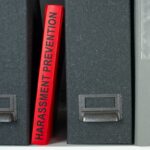Hazard identification is a principal tenet of every risk/safety management system. Every good management system asserts that hazards are to be identified and reported in a timely manner to enable their resolution, with this requirement embedded as a worker responsibility and reinforced within all WHS induction programs.
But have we ever stopped to consider whether this actually works?
This article reflects on two key perspectives of this question: firstly ‘Do we, as workers, see the hazards?’, and secondly ‘Are the hazards being reported?’.
Both components need to work together to have an effective process.
Do we see the hazards?
There is no doubt that we can all become a little oblivious or complacent to things we walk past every day.
Scientific research over the years has proven that human beings are surprisingly poor at observing details. When we look at something, we use personal experiences (and biases) and memory to fill in the gaps. This can have almost alarming implications for a worker undertaking the same task using the same piece of machinery, day in, day out for months or even years, where it can be assumed that they know the task and machinery well, but may not necessarily be seeing all the details (and the dangers) any more.
With about 90 percent of the information we ‘consume’ sourced visually, it is impossible to take everything in; so we naturally filter, prioritising and focussing on what is important to us, and even censoring out some of visual information that is not. We become ‘blind’ to many details, and this ‘inattentional blindness’ explains why we miss some of the obvious and fine details when we are looking straight at them (it also explains why often we pick-up on issues when something doesn’t sound right, feel right or smell right).
‘Inattentional blindness’ is defined as a common human error associated with selective attention or inattention. But whether we give it a psychological title and explanation, or simply describe it as missing the obvious, it is a common point of oversights and failures which has the potential to miss an obvious hazard or risk in the workplace.
So, to the second part, ‘Does the identified hazard get reported?’
Once the hazard is identified, it needs to be raised so that something can be undertaken to address it, but are all workers inclined to stop what they are doing to complete a hazard report?
The answer to this question is influenced by a range of things, with one of the key influencing factors being how immediately hazardous or dangerous the issue is perceived to be by us (as an individual).
A 2017 CQU study explored what influences hazard reporting with the aim of increasing reporting levels. Its starting position was to assess factors such as employment type, level of safety responsibility and prior injury history to see if these factors influenced an intent to report a recognised hazard. The results confirmed that age, organisation role and the level of safety activity in that role were key influencers. However, the key ‘positive influencer’ for the reporting related to whether the person had experienced an injury themselves – potentially they were more attuned to the hazard and the risk of injury and were more keen to ensure that the lesson from their injury was learnt.
So, are all workers inclined to stop what they are doing to get online – or pick up a pen – to report a hazard? With this being such an individual decision, influenced by our own perceptions toward the hazard and the hazard reporting process, the reality is that there is a proportion of the workforce who are not inclined to report.
The upshot, if we know and accept this, is that this risk control measure is flawed and cannot be relied upon. Therefore, we need to be aware of the inherent flaws in the process and build contingencies. It’s important to reconsider how effective our processes are if we are going to rely on this as the primary means of identifying hazards in the workplace. Critically, it presents a good argument for ensuring that a new set of eyes and new perspectives are included in the hazard identification, workplace inspection and workplace auditing processes; and that these ‘new sets of eyes’ are provided the necessary time to complete any related hazard reporting without distraction, so that identified hazards can actually be addressed so they no longer have the potential to cause serious injury.
Please contact QRMC for information or assistance.











